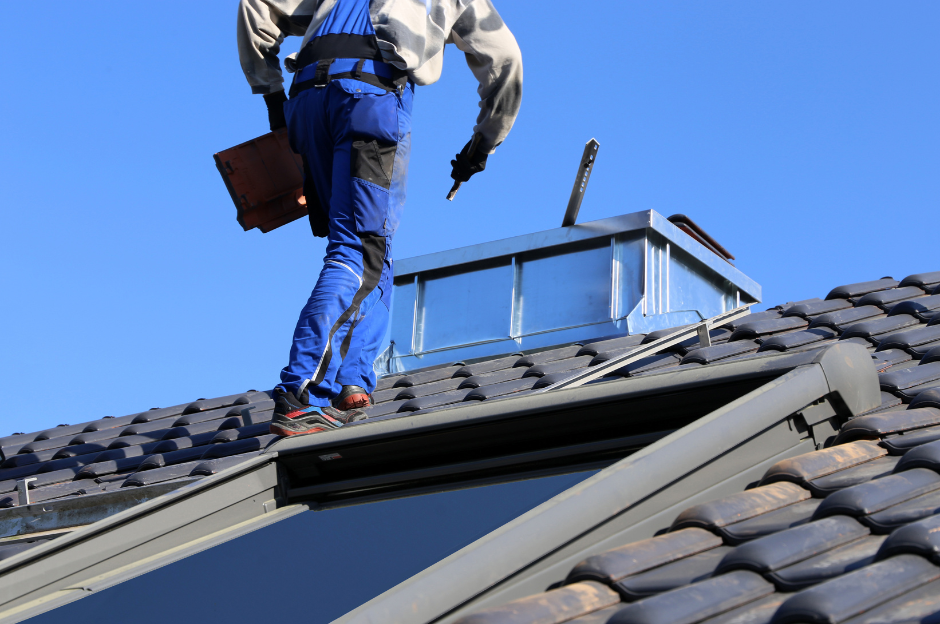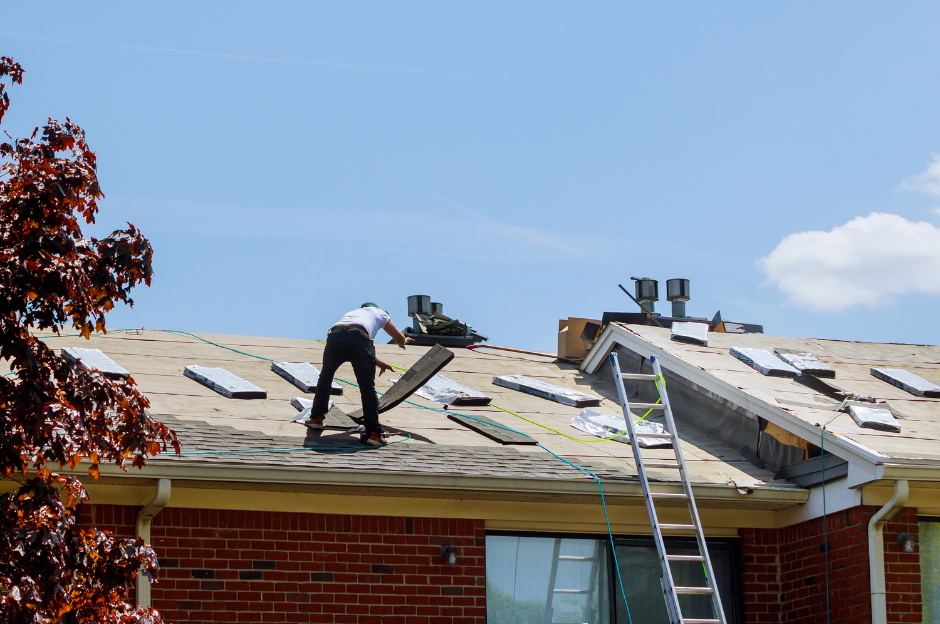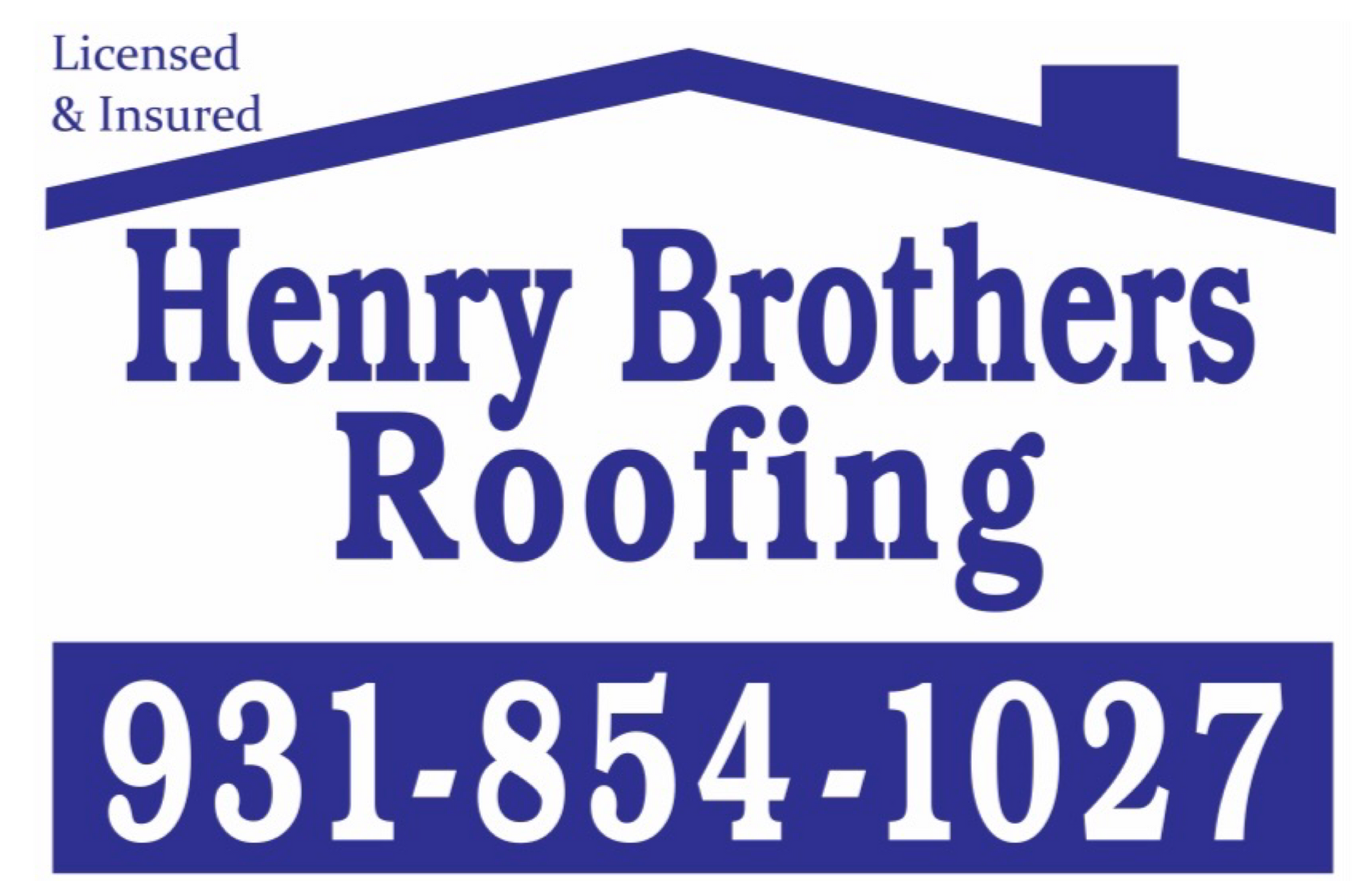Elevate Your Home: Exploring Creative Roofing Designs for Style and Functionality
February 23, 2024

When it comes to home design, the roof plays a crucial role in both aesthetic appeal and functionality. While roofs primarily serve as protective structures, they also offer an opportunity to add character, style, and architectural interest to your home. In this blog post, we'll delve into the world of creative roofing designs, exploring innovative styles, materials, and features that can enhance the beauty and functionality of your home while providing reliable protection from the elements.
Modern Minimalism:
Modern roofing designs often emphasize clean lines, geometric shapes, and minimalist aesthetics. Flat or low-pitched roofs with sleek materials such as metal, concrete, or synthetic membranes create a contemporary look that complements modern architectural styles. Incorporating skylights, solar panels, or green roof elements can add functionality while maintaining a minimalist aesthetic.
Mediterranean Elegance:
Inspired by the architecture of the Mediterranean region, this roofing style features low-pitched terra cotta or clay tile roofs with curved or scalloped edges. These tiles come in a variety of colors and textures, adding warmth, charm, and timeless elegance to Mediterranean and Spanish-style homes. The durable nature of clay tiles provides excellent insulation and protection against the sun's heat, making them both beautiful and functional.
Rustic Charm:
For homes with a rustic or country-inspired aesthetic, roofing materials such as cedar shakes, wood shingles, or slate tiles can enhance the natural beauty of the exterior. These materials offer a weathered, textured appearance that adds warmth and character to traditional and farmhouse-style homes. Incorporating dormer windows, decorative gables, or exposed rafters can further accentuate the rustic charm of the roof design.
Contemporary Cool:
Contemporary roofing designs often feature unconventional materials and bold architectural elements that make a statement. Flat or low-slope roofs with asymmetrical angles, cantilevered sections, or dramatic overhangs create visual interest and depth. Combining materials such as metal, glass, and wood allows for creative expression and customization, resulting in a roof that stands out as a focal point of modern design.
Eco-Friendly Innovations:
With a growing emphasis on sustainability and environmental consciousness, eco-friendly roofing options have become increasingly popular. Green roofs, which incorporate living vegetation and plants, provide natural insulation, reduce stormwater runoff, and improve air quality while creating a visually striking and environmentally friendly rooftop oasis. Additionally, solar roofing systems harness the power of the sun to generate clean, renewable energy, offering homeowners a sustainable and cost-effective alternative to traditional roofing materials.
Factors to Consider When Choosing a Roofing Design:
Climate and Weather Conditions:
Consider the climate and weather patterns in your region when selecting a roofing design and materials. Choose materials that provide adequate insulation, durability, and resistance to wind, rain, snow, and extreme temperatures to ensure long-term performance and protection for your home.
Architectural Style:
Select a roofing design that complements the architectural style of your home and enhances its overall aesthetic appeal. Whether your home is traditional, modern, eclectic, or historic, choose roofing materials and features that harmonize with the existing architectural elements and contribute to the overall visual coherence of the design.
Budget and Maintenance:
Evaluate your budget and long-term maintenance requirements when exploring roofing options. While some materials may have a higher upfront cost, they may offer greater durability, energy efficiency, and longevity, resulting in lower maintenance expenses over time. Factor in installation costs, ongoing maintenance, and potential repairs when making your decision.
Local Building Codes and Regulations:
Ensure compliance with local building codes, zoning regulations, and homeowner association guidelines when planning your roofing project. Obtain necessary permits, approvals, and inspections to ensure that your roofing design meets safety standards, structural requirements, and aesthetic guidelines set forth by local authorities.
Conclusion:
Creative roofing designs offer endless possibilities for enhancing the style, functionality, and curb appeal of your home. Whether you prefer modern minimalism, Mediterranean elegance, rustic charm, contemporary cool, or eco-friendly innovations, there's a roofing design to suit every architectural style and personal preference. By carefully considering factors such as climate, architectural style, budget, and maintenance requirements, you can choose a roofing design that not only protects your home but also reflects your unique sense of style and enhances the beauty of your living space for years to come.
Henry Brothers Blog

Multi-family buildings pose unique challenges for roofing—requiring durable, efficient, and cost-effective solutions that serve multiple households simultaneously. Selecting the right system and partner can significantly impact long-term maintenance and energy bills. Common Roofing Challenges in Multi-Family Properties Large surface areas Multiple penetrations (vents, HVAC units) Noise and disruption during installation High foot traffic for maintenance Energy efficiency Efficient Roofing Materials TPO (Thermoplastic Polyolefin): Lightweight, reflective, and energy-efficient. Ideal for flat or low-slope roofs. Modified Bitumen: Offers durability and weather resistance. Works well for larger structures. Metal Roofing: Long-lasting and low-maintenance. Higher upfront costs but excellent ROI. Asphalt Shingles: Budget-friendly and easy to repair. Better for pitched multi-family homes. Affordability Strategies Bulk Purchasing Discounts: Roofers often offer lower rates for large-scale projects. Energy Rebates and Tax Credits: Cool roofing materials may qualify for incentives. Roof Coatings: Extend lifespan and defer full replacements. Preventive Maintenance Plans: Regular inspections reduce major repair costs. Partnering with the Right Contractor Choose a roofing contractor experienced in multi-family dwellings. Look for: References from similar projects Warranty offerings Insurance and licensing Clear timelines and communication protocols

Your roof is one of the most defining features of your home’s architecture. A well-designed roof complements the style, era, and character of your house, enhancing both curb appeal and value. Whether you own a modern home, a Victorian masterpiece, or a Mediterranean villa, choosing the right roofing materials and design is essential. This article explores custom roofing solutions for different architectural styles, ensuring your roof is both aesthetic and functional. 1. Why Custom Roofing Matters A one-size-fits-all approach doesn’t work for roofing. Here's why customization is key: 🏡 Preserves Architectural Integrity The roof should match the home's era and design. A poorly chosen roof can clash with the architecture and reduce property value. 💰 Boosts Home Value & Curb Appeal A well-matched roof enhances visual appeal, making your home stand out. Homebuyers prefer houses with roofs that fit the overall design. 🌦 Enhances Durability & Efficiency Custom roofing accounts for climate, slope, and insulation. Choosing the right materials ensures longer roof life and energy efficiency. 2. Best Roofing Materials for Different Architectural Styles 🏗 Modern & Contemporary Homes Modern architecture focuses on clean lines, minimalism, and energy efficiency. Best Roofing Options: ✅ Flat Roofs – Achieve a sleek, contemporary look. ✅ Metal Roofing – Durable and complements modern aesthetics. ✅ Green Roofs – Eco-friendly and visually striking. ✅ Solar Panels – Integrate renewable energy solutions. 🏰 Victorian & Gothic Revival Homes These homes have steep-pitched roofs, turrets, and elaborate detailing. Best Roofing Options: ✅ Slate Tiles – Classic, long-lasting, and historically accurate. ✅ Wood Shingles – Adds charm and natural beauty. ✅ Decorative Metal Accents – Enhances ornate Victorian designs. 🏝 Mediterranean & Spanish-Style Homes Inspired by European coastal homes, these feature stucco walls and curved archways. Best Roofing Options: ✅ Clay or Terracotta Tiles – Traditional, weather-resistant, and elegant. ✅ Concrete Tiles – Durable and available in various textures and colors. ✅ Synthetic Spanish Tiles – Modern, lightweight alternatives with classic appeal. 🌲 Rustic & Cabin-Style Homes These homes emphasize natural materials and a cozy aesthetic. Best Roofing Options: ✅ Wood Shakes – Blends seamlessly with wooded surroundings. ✅ Metal Roofing (Rustic Finish) – Durable with a weathered, natural look. ✅ Green Roofs – Enhances sustainability and insulation. 🏡 Colonial & Traditional Homes These timeless homes focus on symmetry and classic proportions. Best Roofing Options: ✅ Asphalt Shingles – Affordable and available in classic shades. ✅ Slate Roofing – Elegant and historically accurate. ✅ Copper or Metal Accents – Enhances historic charm. 🏛 Mid-Century Modern Homes This style features low-sloped roofs, large windows, and open spaces. Best Roofing Options: ✅ Flat or Low-Slope Roofs – Clean, minimalistic aesthetic. ✅ Rubber or Membrane Roofing – Ideal for low-pitch roofs. ✅ Green or Living Roofs – Complements eco-conscious designs. 🏰 Tudor-Style Homes Tudor homes have steeply pitched gables and decorative half-timbering. Best Roofing Options: ✅ Wood or Synthetic Shake Shingles – Traditional and authentic. ✅ Slate Roofing – Enhances historic charm and durability. ✅ Architectural Asphalt Shingles – Mimics wood or slate at a lower cost. 3. Custom Roofing Features to Consider Beyond materials, adding customized elements can elevate your roof’s design. 🔹 Roof Color & Texture Dark roofs enhance historic and formal homes. Light-colored roofs reflect heat, ideal for warm climates. Textured materials (slate, shakes) add visual depth. 🏠 Roof Shape & Pitch Steep roofs fit Gothic and Victorian styles. Flat or low-sloped roofs match modern homes. Custom pitches enhance energy efficiency and durability. 🔆 Skylights & Roof Windows Adds natural light and enhances ventilation. Works well in modern, contemporary, and rustic homes. 🌞 Solar Roofing & Smart Technology Solar shingles blend seamlessly into modern & eco-friendly homes. Smart roofing systems adjust ventilation & insulation automatically. 4. Custom Roofing: How to Get Started 1️⃣ Consult a Roofing Expert Work with an architect or contractor specializing in custom roofs. Ensure they understand historical accuracy and climate considerations. 2️⃣ Choose High-Quality Materials Invest in durability, energy efficiency, and aesthetics. Select roofing that aligns with your home’s style and longevity needs. 3️⃣ Consider Long-Term Costs & ROI Some materials have higher upfront costs but last longer and increase home value. Energy-efficient options can reduce heating and cooling expenses. 4️⃣ Verify Local Building Codes Some roofing styles require special permits. Ensure compliance with HOA guidelines and historical district regulations.


